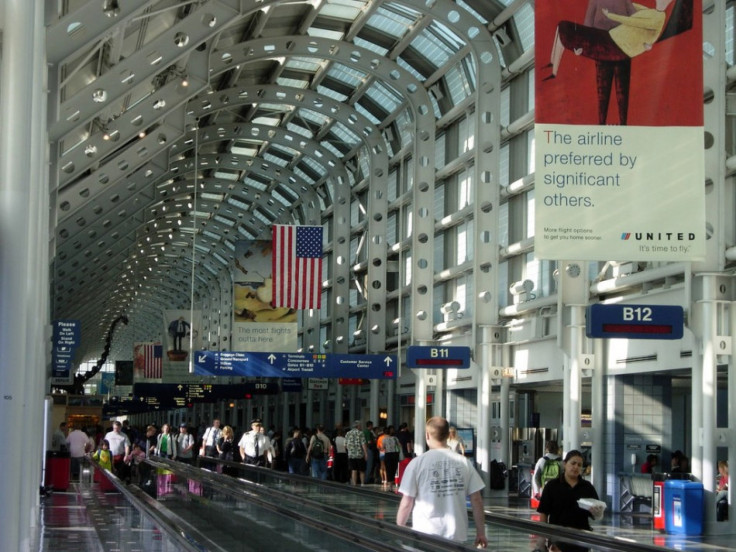Which US Airports Are Most Likely To Spread Disease?

Just how quickly can a disease spread across the globe through international air travel? That's the focus of a new study from the Massachusetts Institute of Technology (MIT) that was published in the journal PLoS One last week.
Researchers at MIT's Department of Civil and Environmental Engineering (CEE) created a new model that explores which of the United States' 40 largest International Airports would be the most likely to spread a disease in the event of an outbreak in the cities they serve. The engineers factored in the airports' geographic locations, passengers' travel patterns, wait times and the interactions between airports to come up with their results.
"Our work is the first to look at the spatial spreading of contagion processes at early times, and to propose a predictor for which 'nodes' -- in this case, airports -- will lead to more aggressive spatial spreading," said Ruben Juanes, the ARCO Associate Professor in Energy Studies in CEE. "The findings could form the basis for an initial evaluation of vaccine allocation strategies in the event of an outbreak, and could inform national security agencies of the most vulnerable pathways for biological attacks in a densely-connected world."
While several of the nation's largest airports made the list, researchers said they were surprised that an airport's ranking wasn't necessarily tied to its size or passenger numbers.
Honolulu, for example, ranked third, even though it handles 30 percent less traffic than the No. 1 airport on the list: John F. Kennedy International Airport in New York. Researchers attribute this to Honolulu's location within the air traffic network, sitting as it does in the Pacific with connections to distant, large and well-connected hubs on both sides of the ocean.
Conversely, the world's busiest airport, Hartsfield-Jackson Atlanta International Airport, ranked No. 8 on the list of potential disease propagators.
Other airports MIT found that were likely to spread disease include Los Angeles (No. 2), San Francisco (No. 4), Newark (No. 5), Chicago O'Hare (No. 6), Washington Dulles (No. 7), Miami (No. 9) and Dallas/Fort Worth (No. 10).
Scares over the past decade like the SARS outbreak in 2003, which spread to 37 countries, and the H1N1 flu virus epidemic in 2009, which spread to over 70 countries, showed just how quickly a disease can disperse through international air travel.
The MIT researchers say their new model will help public health officials contain diseases before an outbreak occurs. Professor Yamir Moreno of the University of Zaragoza, who studies complex networks and spreading patterns of epidemics, agrees.
"Nowadays, one of the most ambitious scientific goals is to predict how different processes of great economic and societal impact evolve as time goes on. We are currently capable of modeling with some detail real disease outbreaks, but we are less effective when it comes to identifying new countermeasures to minimize the impact of an emerging disease," Moreno said. "The work done by the MIT team paves the way to find new containment strategies, as the newly developed measure of influential spreading allows for a better comprehension of the spatiotemporal patterns characterizing the initial stages of a disease outbreak."
© Copyright IBTimes 2025. All rights reserved.






















